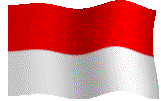Java

Java is the most populous and the most developed island in the Indonesian archipelago. The island is politically divided into the provinces of West Java, East Java and Central Java. The capital city of Jakarta is also located on this island. Java is an epitome of rapidly changing society: beautiful countryside and filthy cities; tranquil rural scenes and streets congested with traffic.
The Javanese are mostly descended from migrants who settled the island in waves from about 4000 BC. Sawah - or wet rice - agriculture was developed gradually from 2000 BC, and trade with South India began as early as the 3rd century AD. It's believed that this contact led to the adoption of Hinduism in coastal kingdoms, while Southeast Asian Buddhism was also an influence and developed side by side with Hinduism, along with older beliefs. In 732 AD the Hindu King Sanjaya founded the kingdom of Mataram, Java's first major political entity, which controlled much of central Java and built the Borobudur temple complex. By the 10th century, King Sendok's East Javanese kingdom was dominant; it was later extended by Airlangga and split into two, the eastern Janggara and the western Kediri, after his death. Mongols invaded Java in 1292, bringing to the throne a new king, Wijaya, and a new kingdom, the Majapahit Empire, which would become the most powerful and famous of Javanese kingdoms until it fell in 1400. By which time Islam was making serious inroads, especially in coastal ports. Coinciding with Islam's rise was the arrival of the Portuguese in 1511, soon followed by the Spanish, British and Dutch. In the course of the 17th century, the Dutch became increasingly militaristic and played their rivals off one another. By the early 19th century the Dutch had extended their influence over the sultanates of the interior and claimed Java as Dutch territory. During the Second World War, in 1942, the island came under the control of Japanese. When the Japanese left the island in 1945, Sukarno proclaimed independence but the Dutch returned and an armed struggle ensued. Ultimately, Indonesia achieved independence in 1949.
Weather and Climate of Java Island
The temperature in Java doesn't vary much, ranging from a minimum of 23° C to a maximum 31° C. The rainy season is from April to October and the dry season is from May to September. Humidity is high throughout the year.
Places to See in Java
Bandung: Also known as the city of flowers and Paris of Java, it is the provincial capital of West Java and the third largest city of Indonesia. Bandung is located at a distance of 175 km from Jakarta and provides a welcome respite from the hustle and bustle of Jakarta. The majority of the population is the native Sundanese from West Java, who are famous for their extroverted, easy-going nature and are reputed as zealous guardians of their ancient culture
Borobudur: One of the greatest Buddhist monuments in Southeast Asia, Borobudur was built in the 8th century and stands on top of a hill surrounded by volcanoes and overlooking green fields. It is an immense multi-tiered structure with the Great Stupa (bell-shaped monument) at the top standing 128ft (40m) above the ground, surrounded by numerous smaller stupas, some still containing Buddha statues inside. It is listed as a UNESCO World Heritage Site and is a major tourist attraction in Java.
Prambanan Temple Complex: Rivalling the Buddhist monument of Borobudur, this magnificent Hindu temple is the largest in Java and the most beautiful in Indonesia. Prambanan was built in the 9th century, possibly to compete with the splendour of Borobudur, or to celebrate the return to power of the Hindu dynasty in Java at the time. From May to October the Ramayana Ballet, a traditional Indonesian dance based on the Ramayana story, is performed on an open-air stage at the complex during the full moon and is a spectacular sight involving hundreds of dancers, singers and musicians.
Yogyakarta: Yogyakarta is one of the most attractive and ancient historical cities in Java. Because of its proximity to Borobudur and Pramban Temple Complex, it is a major stop on the tourist route. Yogyakarta was established in 1755 when Prince Mangkubumi built the Kraton Palace, called himself Sultan and created the most powerful Javanese Kingdom since the 17th century. Today it remains a symbol of resistance to Dutch Colonial rule, as well as the centre for classical Javanese art and culture, including batik, Ramayana ballet, shadow puppetry and music.
Sangiran: Located in Central Java, Sangiran is an important archaeological excavation site, where some of the best examples of fossil skulls of prehistoric 'Java Man' were unearthed by a Dutch professor in 1936.
National Museum: Located in Central Jakarta, and built in 1862, National Museum is the best museum in Indonesia and one of the finest in Southeast Asia. It has an enormous collection of cultural objects of the various ethnic groups - costumes, musical instruments, model houses et al. - and numerous fine bronzes from the Hindu-Javanese period.


